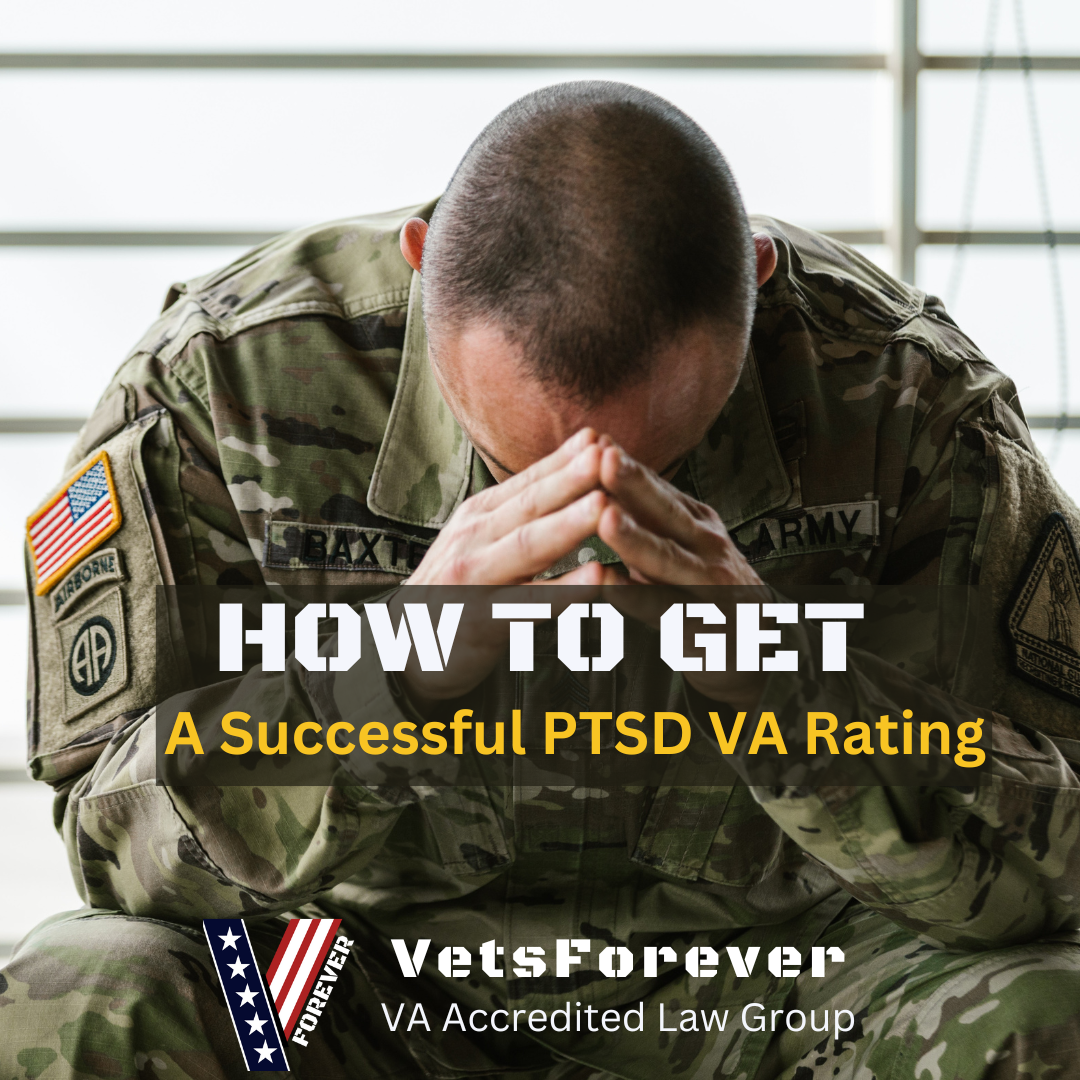
It’s no secret that Post-Traumatic Stress Disorder (PTSD) can devastate an individual’s well-being, making it difficult to function in everyday life. But did you know there are secrets to getting a successful PTSD VA rating? By understanding the ins and outs of the evaluation process and following a few misunderstood tips, you can increase your chances of success.
In this article, we’ll explore five top secrets for successfully getting rated, so you can get the compensation you deserve.
What is PTSD?
PTSD is a harmful mental state that can occur when someone experiences or witnesses a traumatic event. This disorder can significantly impact an individual’s daily life, making working or interacting with others difficult.
Veterans who’ve served in combat are particularly at risk of developing PTSD, and they need to receive the care they require to function normally in society. However, there are non combat PTSD related events that can cause the disorder.
For instance, survivors of sexual assault, including rape, may experience Military Sexual Trauma (MST) as a result of the trauma they endured. People who have lived through natural disasters such as hurricanes, earthquakes, and wildfires may develop PTSD due to the fear, helplessness, and loss experienced during the event. Also, survivors of serious accidents, such as car crashes, train derailments, or plane crashes, may experience PTSD due to the trauma inflicted upon them.
If you’re a veteran suffering from PTSD, you may qualify for a VA disability rating. Therefore, here are five secrets to help you get a successful PTSD VA rating.
How Does the VA Determine a PTSD Disability Rating?
When obtaining a PTSD disability rating, understanding how the VA evaluates your claim is crucial. The VA rates PTSD as a mental disorder under CFR Title 38, Part 4, Schedule for Rating Disabilities, Diagnostic Code (DC) 9411, Post-Traumatic Stress Disorder. The cited code means the VA will use this specific code to evaluate your symptoms and determine your disability rating.
Your level of compensation will be based on the frequency, severity, and duration of symptoms coupled with how those symptoms affect your occupationally and socially. To make that determination, the VA will assess how your PTSD impacts your ability to work, carry out daily tasks, and interact with others.
Your PTSD diagnosis can be rated at 0%, 10%, 30%, 50%, 70%, or 100%, depending on how the VA rater evaluates your claim; that’s why understanding how the VA determines the impact of your symptoms is vital in developing a strategy to obtain a favorable outcome for your claim. Here are five “secret” ways to successfully pursue your disability claim.
1. Map Out Your Strategy
Developing a strategy is crucial to obtaining a successful PTSD VA rating. While the process can be challenging, understanding the necessary steps can help make it less daunting. Working with a VA Accredited Law Group like VetsForever can help in this process.
The first step is understanding the difficulty level of obtaining a VA disability rating for PTSD. While it can be challenging, it is not impossible, and with proper documentation, it is achievable.
To prove you have PTSD, the VA typically relies on a combination of medical evidence and personal accounts. Qualifying evidence can include the following:
- Medical records.
- Buddy letters from family members and friends.
- Personal statement in support of claim
- Any other proof that supports your claim.
The average VA rating for PTSD is 70%, but obtaining that level is not a guarantee, a floor, or a ceiling. Understanding the different percentages used by the VA and how they may apply to your situation can be helpful as you collect your documentation and build your claim.
However, contrary to popular belief, PTSD is not an automatic 50% disability rating; the level you receive is dependent on your unique symptoms and how impactful your condition is on your daily life. Consequently, a well-planned claim strategy and proper documentation increase your chances of obtaining a VA PTSD increase from 50 to 70 percent.
2. Understand the PTSD Eligibility Requirements
To qualify for a PTSD VA rating, several requirements must be met. The first requirement is that you must have a medical diagnosis of PTSD. This diagnosis must come from a qualified mental health professional and should include a detailed description of your symptoms.
As part of the medical verification, you’ll need a Nexus Letter and a Disability Benefits Questionnaire (DBQ) form filled out by the examining physician, explicitly stating that your PTSD resulted from an event during your time serving the nation. This event can be a combat experience or any other traumatic event while on active duty.
Finally, you must be experiencing persistent and recurring PTSD symptoms. These symptoms may include flashbacks, nightmares, and avoidance of triggers. Documenting your symptoms is essential, as they’ll be a determining factor in assigning your disability rating.
3. Choose the Best Avenue for Obtaining a PTSD VA Rating
Veterans can pursue three primary avenues to receive a disability rating. The first is a direct service connection, which means the veteran must prove that an event or experience caused their PTSD during their military service.
The next avenue is a secondary service connection, in which a veteran claims their PTSD has worsened an existing condition. This avenue requires the veteran to provide evidence linking the increased severity of their illness to PTSD.

Finally, veterans unable to work due to PTSD can pursue a rating by claiming unemployability. This avenue requires veterans to prove that their PTSD prevents them from obtaining and maintaining employment, thus preventing them from earning a living to sustain themselves.
By understanding these three primary avenues, veterans can determine the best path to pursue that addresses their specific circumstances and increase their chances of receiving a favorable VA PTSD rating.
4. Strategies for Increasing Your Rating
If you’ve already received a VA rating for PTSD but believe that your symptoms have worsened or you’ve been rated too low, there are ways to increase it. One effective strategy is to demonstrate how your PTSD symptoms negatively impact your daily life, social integration, and employment prospects. By providing evidence of how your symptoms affect your ability to function in different aspects of life, you may be able to convince the VA to increase your rating.
When reviewing your claim, VA raters will look for evidence that supports your PTSD diagnosis and if it is service-connected. They will also want to see how your symptoms interfere with your ability to work, perform daily activities, and maintain social relationships. It’s essential to support your claim and gather all your medical records, including treatment notes, progress reports, and statements from medical professionals.
Remember that the VA will consider the total cumulative evidence, so it’s crucial to thoroughly document your symptoms and how severely they affect your life. This evidence can help strengthen your case for an increased rating.
5. Put the Odds in Your Favor
There are a few important things to remember if you want to succeed in pursuing a VA disability claim and not have your PTSD claim denied. First, you should make your medical evidence as compelling as possible. Provide detailed documentation of your symptoms and any treatment you have received for your condition is where you want to start. By doing so, you can position yourself to give the VA Rater a legitimate reason to evoke the “Reasonable Doubt Rule,” which means that the VA must award you the benefit of the doubt if the evidence for and against your claim is evenly balanced.
It’s also important to remember that your self-reporting is also highly valued. Be honest and upfront about your symptoms, how they affect your daily life, and your ability to work or socialize. Additionally, when there is doubt about your claim, the benefit is always decided in favor of the veteran. Essentially, the VA recognizes that you’ve earned the right to receive the benefits that’ll help you bring balance back into your life.
By understanding the process required to pursue a disability claim and then putting the odds in your favor, your chances of obtaining the PTSD VA rating you deserve increase significantly.
Summary
Getting a VA disability claim approved can be challenging but achievable with knowledge, persistence, organization, and patience. There are different avenues to getting a rating, and it’s essential to understand them and pursue the one that best suits your symptomatic conditions. Additionally, if you’re already rated at less than 100%, you should learn what it takes to increase your rating.
Strongly compelling documentation that supports your claim is critical to getting a favorable rating. Remember that your self-reporting weighs heavily, and the benefit is always decided in favor of the veteran when there’s doubt. It’s also essential to know what VA raters look for when reviewing your claim and demonstrate how PTSD negatively impacts your employment prospects, daily life, or social integration.
To increase your chances of getting a successful PTSD VA rating, put the odds in your favor by understanding the rules, gathering as detailed and descriptive documentation as possible, and pursuing the best avenue that matches your symptomatic conditions. Be persistent and patient, and remember that you’re entitled to your VA benefits as a brave patriot who has honorably served your country!

